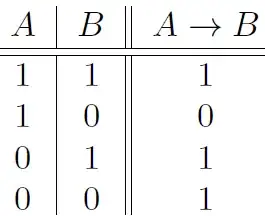In logic, do the $\Longrightarrow$ and $\rightarrow$ signify different things? Are there contexts where one is more appropriate than the other?
I had believed that the $\Longrightarrow$ was for metalogic, and the $\rightarrow$ was for logic. However, recently, I've noticed $\Longrightarrow$ used more often than $\rightarrow$ in non-metalogical logical contexts.

→ ⇒ ⊨ ⊢– ryang Mar 04 '23 at 21:23